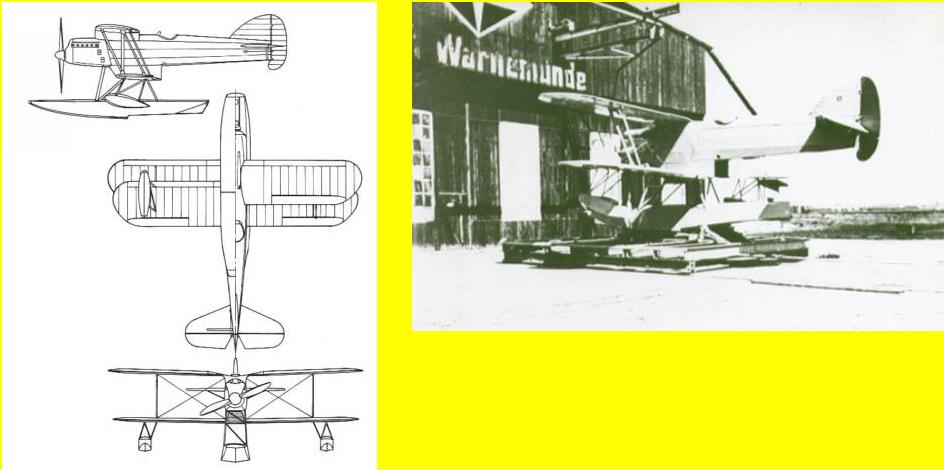Built in 1930 as a catapultable single-seat float fighter, the SSD I possessed no commonality with other Arado fighters of the period. A single-bay equi-span biplane with plywood-covered wooden wings with N-type interplane struts, and, unlike preceding fighter aircraft from the Warnemünde-based company, ailerons in both upper and lower wings, the SSD I was powered by a 640hp BMW VI 6.3 12-cylinder Vee-type watercooled engine. The upper wing was gulled into the top decking of the welded steel-tube fuselage ahead of the cockpit and the lower wing was suspended below the fuselage, the gap being occupied by the tunnel-type radiator. Initial water trials were conducted at Travemünde with a central main float and twin outrigger stabilising floats. The SSD I was subsequently fitted with a somewhat rudimentary wheel undercarriage to permit trials at Lipezk, the clandestine German flying school in the Soviet Union, where the armament of twin 7.9mm guns was fitted. The Heinkel HD 38 was selected in preference to the SSD I, the sole prototype of which was assigned in April 1932 to the Luftdienst GmbH, and, a year later, to the Deutsche Verkehrsfliegerschule (DVS), the German commercial pilots' school. The following data relate to the SSD I with wheel undercarriage.
| Type |
Single seat floatplane fighter |
Single seat fighter, land version |
| Engine |
1 BMW VI 5.5 Z |
| Dimensions |
Length 10.10 m, height 4,79 m, span 10.00 m, wingarea 30.90 m2 |
Length 8.50 m wingspan 10.00 m wingarea 30.90 m2 |
| Weights |
Empty 1626 kg, flying weight 2030 kg, wing loading 66.00 kg/m2 |
|
| Performance |
Max. speed 280 km/h, climb to 1000 m 1.5 min., landing speed 105 km/h, service ceiling 6800 m |
|
| Armament |
Planned : 2 7,9 mm MG 15/08 |
| Type |
Werk.Nr |
Registration |
History |
|
53 |
D-1905 |
Tested first as a floatplane, then rebuilt with wheels. Belonged to the Luftdienst GmbH and DVS from 1930. Crashed 1933 at Breitling during landing |

